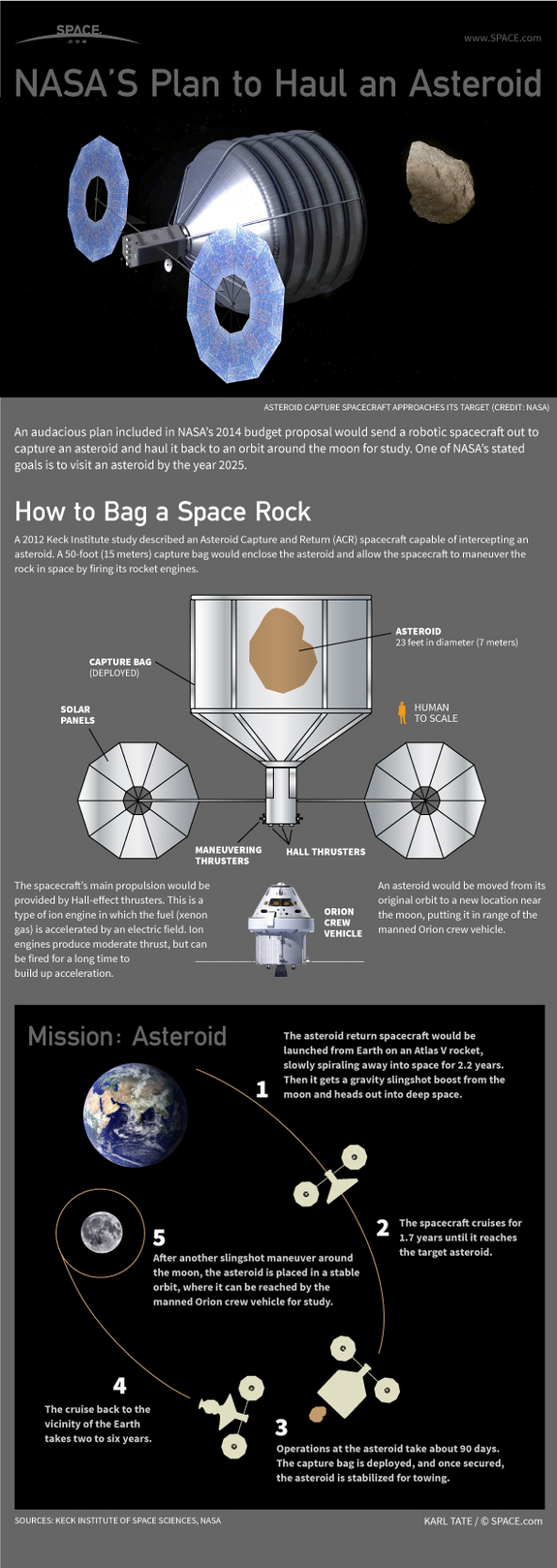
Source SPACE.com: All about our solar system, outer space and exploration
An audacious plan included in NASA’s 2014 budget proposal would send a robotic spacecraft out to capture an asteroid and haul it back to an orbit around the moon for study. One of NASA’s stated goals is to visit an asteroid by the year 2025.
A 2012 Keck Institute study described an Asteroid Capture and Return (ACR) spacecraft capable of intercepting an asteroid. A 50-foot (15 meters) capture bag would enclose the asteroid and allow the spacecraft to maneuver the rock in space by firing its rocket engines.
The spacecraft’s main propulsion would be provided by Hall-effect thrusters. This is a type of ion engine in which the fuel (xenon gas) is accelerated by an electric field. Ion engines produce moderate thrust, but can be fired for a long time to build up acceleration.
An asteroid would be moved from its original orbit to a new location near the moon, putting it in range of the manned Orion crew vehicle.
To move the asteroid, the spacecraft would first be launched from Earth on an Atlas 5 rocket, slowly spiraling away into space for 2.2 years. Then it gets a gravity slingshot boost from the moon and heads out into deep space.
The spacecraft cruises for 1.7 years until it reaches the target asteroid. Operations at the asteroid take about 90 days. The capture bag is deployed, and once secured, the asteroid is stabilized for towing.
The cruise back to the vicinity of the Earth takes two to six years. After another slingshot maneuver around the moon, the asteroid is placed in a stable orbit, where it can be reached by the manned Orion crew vehicle for study.






No comments:
Post a Comment